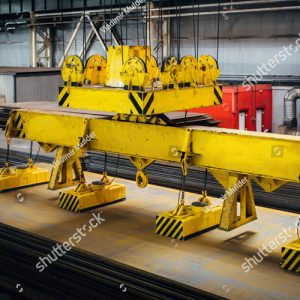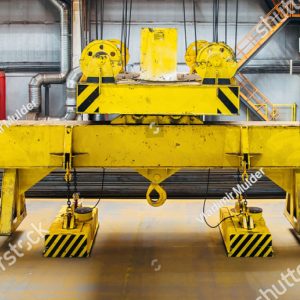Description
HAVE YOU CONSIDERED USING WHITTINGTON SPIRAL CONVEYOR DRUMS?
OVER 10,000 IN USE IN AUSTRALIA, SOME FOR OVER 20 YEARS!
FOR EXAMPLE:
Large ones at
Eg. 1060 dia x 2750 long – Bougainville Copper
– Mount Isa Mines
– Savage River Mines
– Sugar Mills
– BHP Steel Works
Medium ones for – Brick Works
– Glass Works
– Foundries
– Quarries
Small ones at
Eg. 150 dia x 300 long – Shepparton Preserving
– Dampier Salt
GIVE THEM A TRY
YOU WILL PROBABLY FIND THEM CHEAPER TOO.
Construction in Steel – Stainless Steel – Rubber Covered
SHAFT FIXINGS: Welded – Taper Locks – Ring Fedder – Bored & Keyed – Clampons – Dead Shaft
WHY A WHITTINGTON SPIRAL DRUM?
Material build-up on conveyor belts, idlers and drums leads to bad tracking, belt damage, spillage and higher maintenance costs.
WHITTINGTON SPIRAL CONVEYOR DRUMS HELP OVERCOME THESE PROBLEMS.
The unique spiral design greatly increases the efficiency and life of conveyor belts. Extra forces applied to the belt, by the opposing spirals, assist with belt tracking, dissipates heat and dislodges unwanted materials from the drum and belt.
APPLICATIONS IN VARIOUS INDUSTRIES
From Heavy Industrial and Mining to Food Conveying. Whittington Spiral Conveyor Drum are manufactured to:-
- any dimensions
- various materials
- specially treated
- rubber covered
- fixed shaft
- removable shaft
SPIRAL CONVEYOR DRUMS
Material build-up on conveyor belts, idlers and drums, usually leads to all sorts of problems such as bad tracking, belt damage, spillage and higher maintenance costs.
Numerous ideas have been tried in an attempt to overcome these problems; one of the most successful to emerge has been the Whittington range of Spiral Conveyor Drums.
The unique spiral design of the Whittington conveyor drums greatly increased the efficiency and life of conveyor belts. The extra forces applied to the belt by the opposing spirals ensure that the belt is centred and kept tracking correctly at all times, while dissipating heat and dislodging unwanted materials from the drum face and the back of the conveyor belt.
Applications can be found in many varying industries, from Mining to Food Conveying.
The Whittington Spiral Conveyor Drum can be manufactured to any dimensions, specially
treated, rubber covered and constructed with fixed or removable shafts.
WHITTINGTON SPIRAL CONVEYOR DRUMS.
STRENGTH OF WHITTINGTONS.
The design of the Whittington Spiral Drum incorporates Vanes welded around the shaft which makes them considerable stronger than ordinary conveyor drums.
The Whittington Spiral Drums can be designed for any load conditions, and the price varies for the same size according to the shaft size. This is because the construction of the pulley is made heavier in line with the load expected to be applied to the shaft of a particular size. However any unit which may be subject to unusual or extra heavy loading conditions, should be referred to Mecal so that our Engineers can ensure that the design is adequate.
Further care must be taken when small shafts, compared with the size of the drum, are specified. These often occur on conveyors of short centres and wide belts with screw take-ups, in these circumstances even with the stronger Whittington a careless or inexperienced operator can break a shaft. It is advisable to watch for this as such a failure may be blamed on a Whittington when in fact it is more likely to occur with an ordinary drum in the same circumstances.
WHITTINGTON spiral conveyor drums
friction tests
Where were they carried out? At our own plant in West Footscray, Australia.
A standard static method of testing such things was adopted but instead of testing a Whittington alone we tested an equivalent size plain pulley as we considered a comparison would eliminate any errors or factors relating to our particular methods or rig.
A 12” and 15” diameter by 18” width was used and in all cases, they were pulleys which had been in use for some time, although not as “drivers” and had a bright polished surface – 12” belt 3 ply 1/16” covers against the drum was used.
Whittingtons (as do plain pulleys) when new have a greater co-efficient of friction than after being polished by use. The difference being greater we felt with the Whittington because, in most cases, Whittingtons are not machined on the outside.
The results obtained were as follows:-
When lightly loaded, the Whittingtons obeyed the normal fricition laws and the friction factor was almost the same as the plain pulley. As the tension was increased the Whittington’s co-efficient increased rapidly, so much so that it was obvious that there was more than fricition alone involved.
It was concluded that, after applying heavy loads and working within the limits of the belt and observing the belt surface behaviour on the pulley, the belt’s slight embedding between the spirals of the Whittington was providing a “gear” drive effect which greatly increased the “co-efficient” of friction.
Conculsions
Variables that affected Whittingtons that do not apply to plain drums:-
- The effect of the non-machined surface.
- The rubber embedding slightly between the spirals – which varies according to both the tension and the thickness of the rubber covering.
- Stiffness of the belt – i.e. a 6 ply belt is likely to deflect less between the common 1” space between spirals then does a 2 ply.
- “Floating” of the belt in wet applications – caused by a “lubricating” film of water or oil between belt and pulley greatly reduced in the case of a Whittington.
It has been proven in such practical cases as washed gravel plants, brick works and even small applications such as potato chips, where plain drums continually slipped because of water (and oil in the case of the chips), did not when replaced by a similar sized Whittington. The detrimental effect on “tracking” caused by slipping was also eliminated.
Our tests showed that:-
For up to 30% of the belts maximum working tension the co-efficient of friction was similar to a plain drum. From 30% to 60% it gradually increased to about many times that of a plain drum.
The rubber covered Whittingtons have not been tested, but it is reasonable to assume that they would have the same co-efficient of friction as a plain rubber covered drum.
Because of the Whittingtons advantages cleaning, tracking and lack of “floating” if applicable, it would be safe to consider a rubber lagged Whittington to be as effective as a Herringbone rubber lagged plain pulley.
WHITTINGTON SPIRAL DRUMS
SUITABLE FOR ALLTYPES OF BELTCONVEYORS
WHITTINGTON DRUMS UNIQUE DESIGN CLEANS AND CENTRES YOUR BELTS.
*image
Drive drums-tail-snub-bend or take-up-no matter what the application or the product being handled – Whittington Drums can be used.
DIRECTION OF ROTATION & SELF TRACKING.
WHITTINGTON Drums are normally mounted so that when in operation, they give the appearance that each spiral is moving towards the centre of the drum.
Should the belt, through any outside influences, move to one side of the drum, the belt comes in contact with more spirals on that side. The resultant increase in forces moves the belt back to the centre of the drum where the forces are equal and opposite.
SELF-CLEANING.
Unwanted build up of material cannot occur on the conveyor belt or the face of the WHITTINGTON Drum. The cleaning action occurs through the rippling or flexing of the belt, as Drive drums-tail-snub-bend or take-up-no matter what the application or the product being handled -Whittington Drums can be used. SUITABLE FOR ALLTYPES OF BELTCONVEYORS.
AVAILABLE TYPES OF CONSTRUCTION:
STANDARD WELDED
*image
TAPER LOCK & BUSH
*image
QD OR RING FEEDER
*image
DEAD SHAFT WITH BEARING
*image





